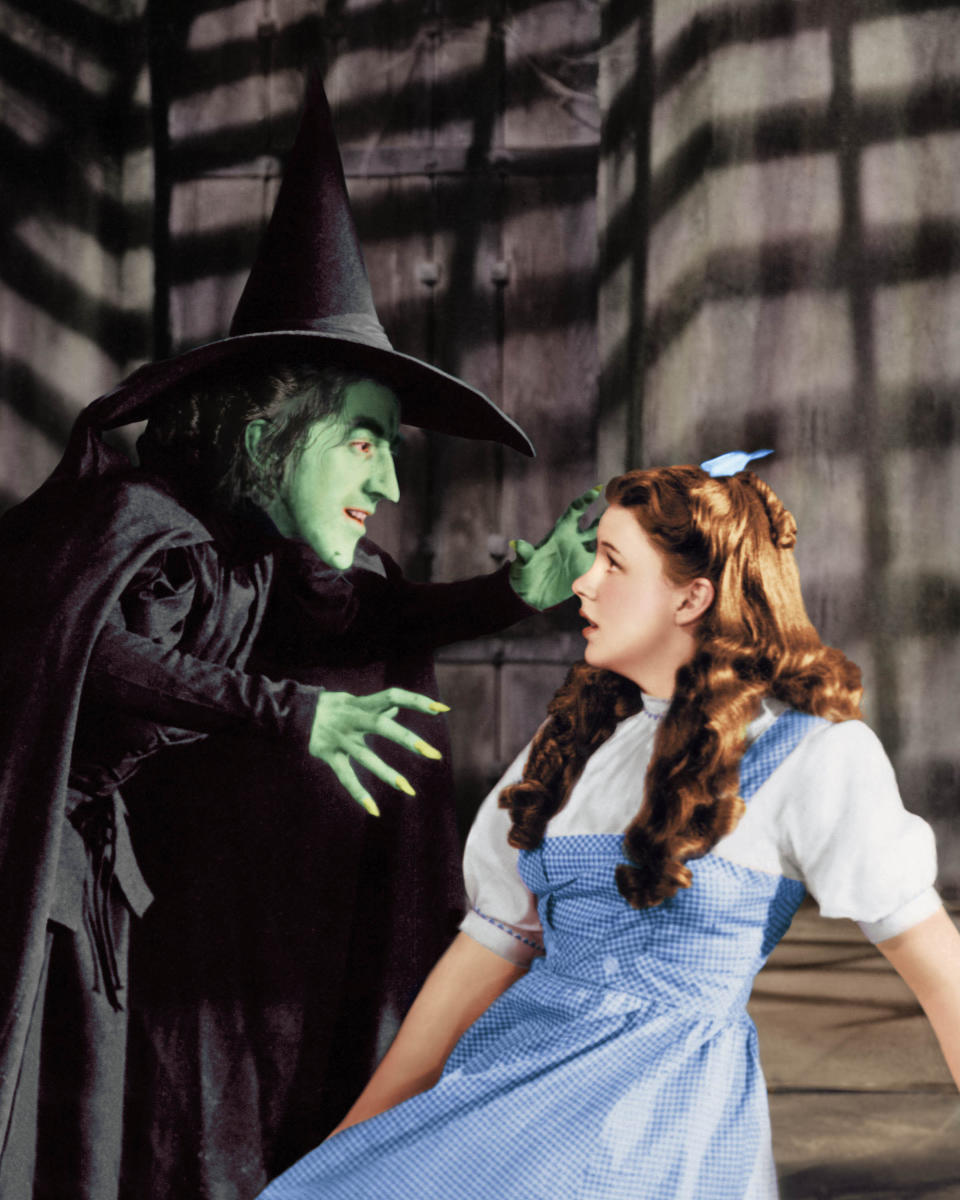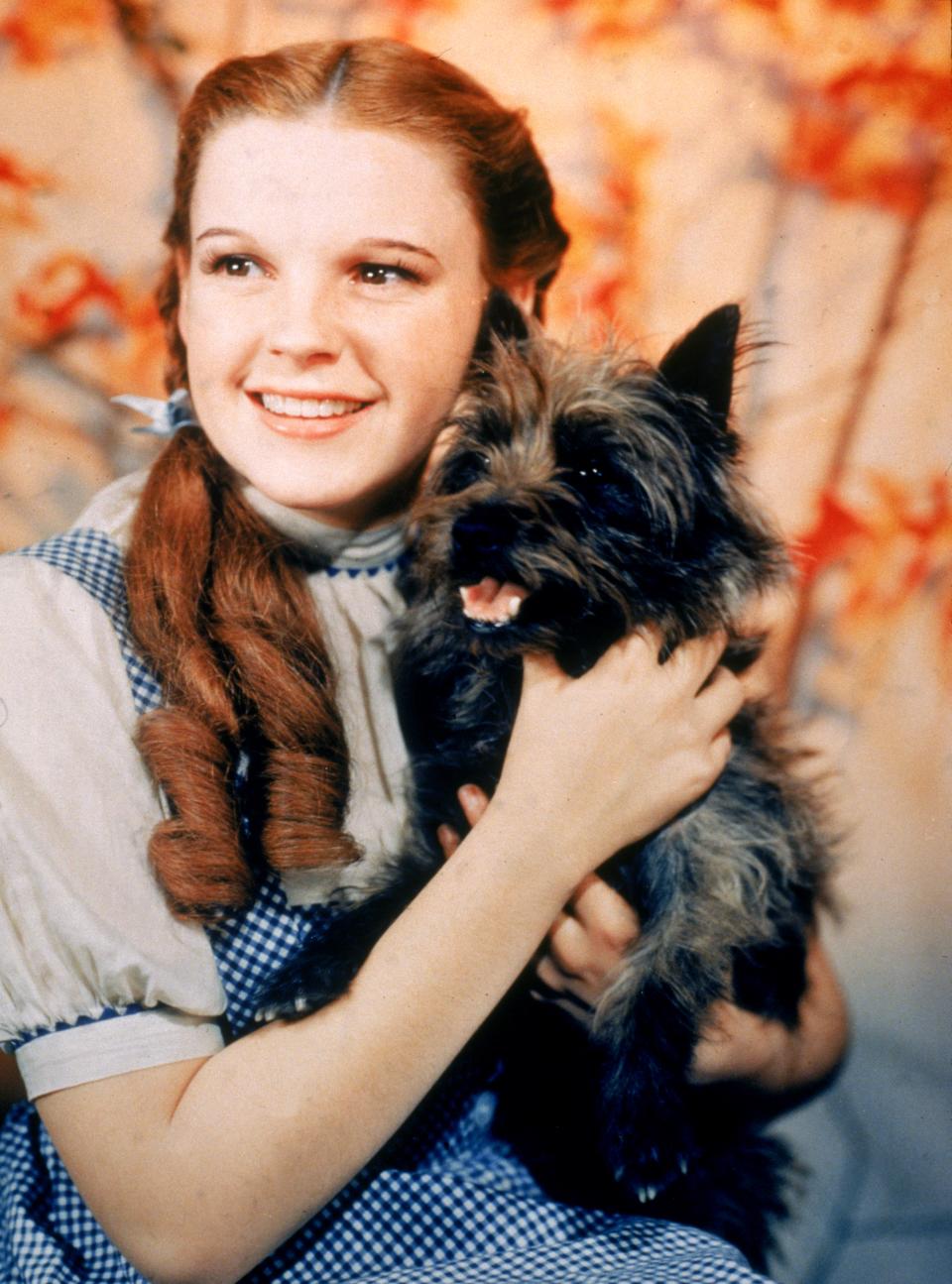Judy Garland Was ‘Under Pressure’ to Make ‘The Wizard of Oz’ a Hit, Including Weight Loss
- Oops!Something went wrong.Please try again later.
In a scene cut from the final version of The Wizard of Oz, Judy Garland’s Dorothy Gale sings an a cappella reprise of “Over the Rainbow” while held prisoner in the witch’s castle. “She breaks down and cries because she wants to go home,” reveals film expert William Stillman, who explains that Judy’s haunting performance deeply affected the crew capturing her singing. “Some of them had to walk off the set so their sobs wouldn’t be picked up on the recording,” he says. “It was just so heartfelt.”
Judy’s career spanned five decades and some 40 films, but she would always be most closely identified with 1939’s The Wizard of Oz and its theme song, “Over the Rainbow.” “It has always been my song,” said Judy, who never grew bored singing the tune. “It’s like getting tired of breathing. The whole premise of the song is a question. It represents everyone’s wondering why things can’t be a little better.”
Judy was signed by MGM Studios at age 13, but it was her role in The Wizard of Oz three years later that propelled her from contract player to star. “It was MGM’s most expensive production to date,” explains Stillman, coauthor of The Road to Oz: The Evolution, Creation, and Legacy of a Motion Picture Masterpiece. “She was surrounded by a veteran cast of seasoned comedians and dancers, but she was the center of attention.” The producers even presented Judy with her own custom dressing room on the set.
Of course, there were high expectations attached to these perks. “When I was first told that I was to play Dorothy in Wizard of Oz, with the picture’s budget set at $3 million, I knew that my entire future rested on my ability to play Dorothy convincingly,” said Judy.
Beyond the demands for excellence as a singer, actor and dancer, the studio executives wanted Judy to lose weight for the role. “They assigned her a personal trainer,” says Stillman, who says this assistant monitored Judy’s diet and exercise on and off the set. “I was studied like a piece of merchandise,” recalled Judy, who often felt like an ugly duckling compared to MGM’s stable of glamour girls like Lana Turner and Elizabeth Taylor. “It didn’t occur to anyone that I might have feelings.”
Over the Rainbow
Fortunately, Judy earned some allies among the cast and crew of Oz. Margaret Hamilton, who played the Wicked Witch of the West, invited her young costar to join her for tea. “Judy was under a lot of pressure,” Margaret’s son, Hamilton Meserve, tells Closer exclusively, adding that his mother didn’t think “being isolated on the set for long periods” was good for Judy.

The younger performer never forgot Margaret’s kindness, or the absurdity of enjoying a tea party with the Wicked Witch in costume. “She recalled that because of the heat, some of Margaret’s green makeup ran and tinted the crumpets she was serving,” Stillman says.
Vaudeville veterans Ray Bolger (the Scarecrow), Bert Lahr (the Cowardly Lion) and Jack Haley (the Tin Man) also fell under Judy’s spell. “There was a special camaraderie among the three men. They would share stories or tell dirty jokes, and Judy would eavesdrop on them,” says Stillman. “They would tease her and tell her to go away. But they got on well. They all felt she was adorable, charming and well-mannered.”
Judy made other friends on the set, too. “She spent time bonding with Toto. There was a report that she sketched him in pastels,” says Stillman, who notes that the performer had some skill at arts and crafts. “Judy even knitted a sweater for a crew member’s new baby,” he adds.

No Place Like Home
The Wizard of Oz opened nationally on August 25, 1939. While it received largely good reviews, its box office earnings didn’t completely cover its high production costs. At the 1940 Academy Awards, it was nominated for six Oscars and won for Best Original Score and Best Original Song for “Over the Rainbow.” Judy also received an honorary juvenile Academy Award recognizing her performances in The Wizard of Oz and 1937’s Babes in Arms.
Her stardom achieved, Judy signed a new contract at MGM and was given a substantial raise. She would go on to many more movie roles — and occasional reunions with her Oz co-stars. “She made another film with Ray Bolger in 1946 called The Harvey Girls,” says Stillman. “She remained close with him until the end of her life.”
It wasn’t until CBS began broadcasting The Wizard of Oz annually that it became one of the world’s most popular films. “When it aired for the first time in 1956, Bert Lahr hosted it. They wanted to have Judy come on, but she was engaged, so her daughter Liza Minnelli hosted with Bert,” says Stillman. She was a fan. “The Wizard of Oz, to me, is what it is to everybody else, because I certainly didn’t know my mom when she was [16],” says Liza. “I just see this little girl up there.”
The Wizard of Oz became a ratings powerhouse on television, but none of the actors received any additional money. Notes Stillman: “As Ray Bolger said, ‘We don’t get residuals, just immortality!’”

